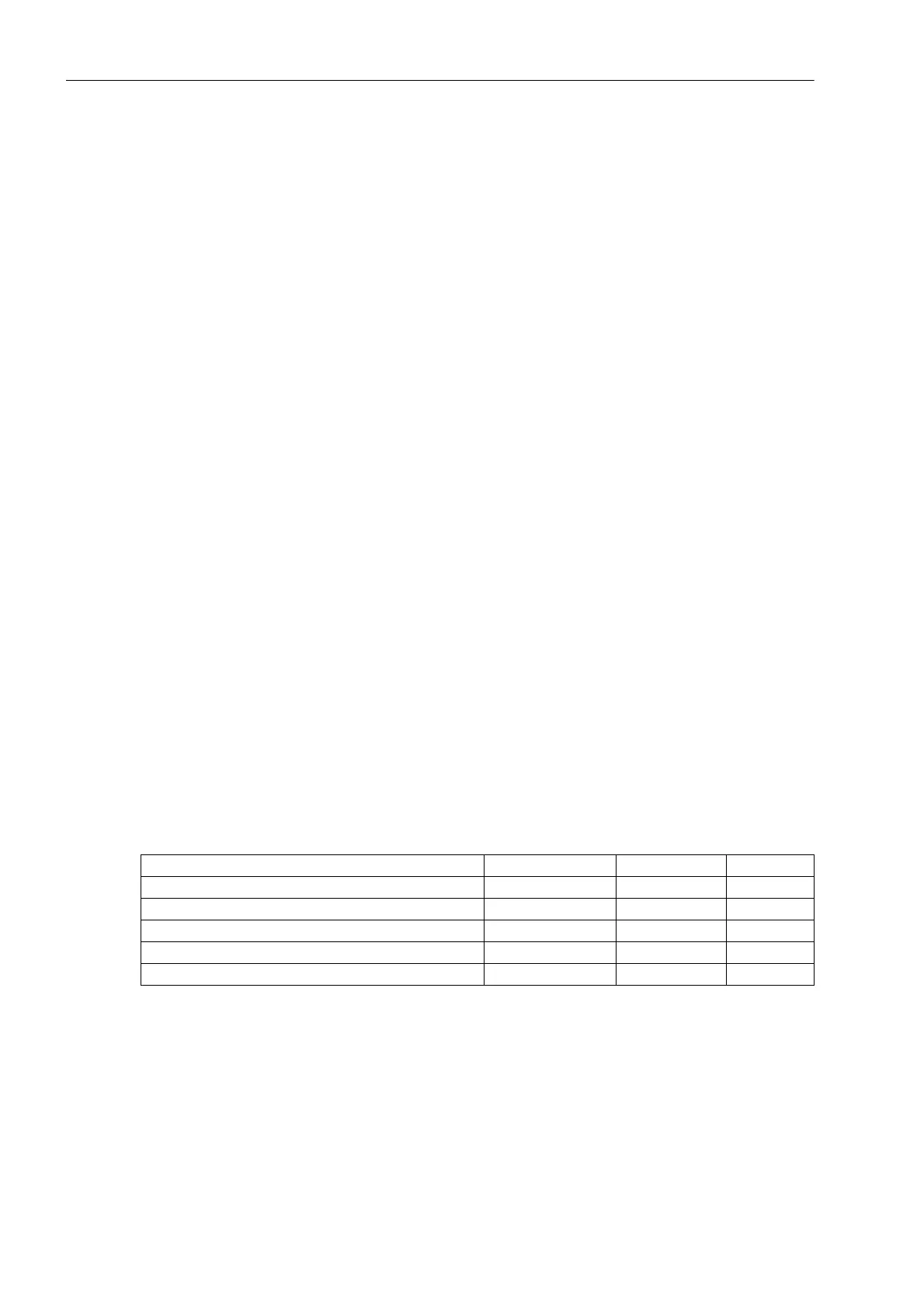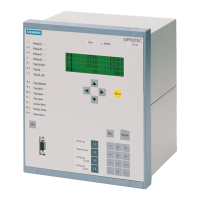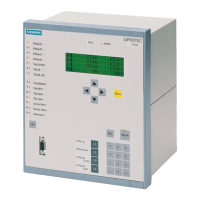Functions
2.50 Command Processing
SIPROTEC, 7UM62, Manual
C53000-G1176-C149-7, Release date 03.2010
352
2.50.4 Interlocking
Interlocking is implemented via the user-definable logic (CFC).
2.50.4.1 Description
Switchgear interlocking checks in a SICAM/SIPROTEC 4 system are normally divided in the following groups:
• System interlocking, using the system database in the central control system
• Bay interlocking, based on the object database (feedbacks) in the bay unit.
• Cross-bay interlocking via GOOSE messages sent directly between the bay controllers and protection
devices (with IEC 61850: inter relay communication with GOOSE is accomplished via the EN100 module)
The extent of the interlocking checks is determined by the configuration of the relay. For more information on
GOOSE please refer to the SIPROTEC System Description /1/.
Switching objects that require system interlocking in a central control system are assigned to a specific param-
eter inside the bay unit (via configuration matrix).
For all commands, operation with interlocking (normal mode) or without interlocking (Interlocking OFF) can be
selected:
• For local commands by reprogramming the settings with password check,
• for automatic commands via command processing with CFC, by deactivated interlocking status,
• For local / remote commands, using an additional interlocking disable command via PROFIBUS.
Interlocked/non-interlocked switching
The configurable command checks in the SIPROTEC 4 devices are also called "standard interlocking". These
checks can be activated via DIGSI (interlocked switching/tagging) or deactivated (non-interlocked).
De-interlocked or non-interlocked switching means that the configured interlock conditions are not tested.
Interlocked switching means that all configured interlocking conditions are checked within the command pro-
cessing. If a condition could not be fulfilled, the command will be rejected by a message with a minus added to
it, e.g. CO–, followed by an operation response information.
The following table shows the possible types of commands to a breaker and associated indications. For the
device the messages designated with *) are displayed in the event logs, for DIGSI 4 they appear in spontane-
ous messages.
The "plus" appearing in the message is a confirmation of the command execution. The command execution
was as expected, in other words positive. A minus sign means a negative, i.e. an unexpected result; the
command was rejected. Possible command feedbacks and their causes are dealt with in the SIPROTEC 4
System Description. The following figure shows operational indications relating to command execution and op-
eration response information for successful switching of the circuit breaker.
The check of interlockings can be configured separately for all switching devices and taggings. Other internal
commands such as overriding or abort are not tested, i.e. are executed independently of the interlockings.
Type of Command Control Cause Message
Control issued Switching CO CO+/–
Manual tagging (positive / negative) Manual tagging MT MT+/–
Information state command, Input blocking Input blocking ST ST+/– *)
Output Blocking Output blocking ST ST+/– *)
Cancel command Cancel CA CA+/–

